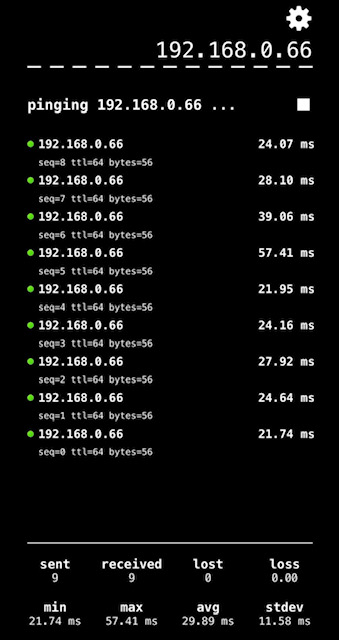| .. | ||
| boot | ||
| images | ||
| include | ||
| kernel | ||
| lib | ||
| net | ||
| tcpip | ||
| Makefile | ||
| Makefile.gcc | ||
| README.md | ||
Writing a "bare metal" operating system for Raspberry Pi 4 (Part 15)
Adding a TCP/IP stack
Having achieved "proof of life" from our Ethernet module in part14-spi-ethernet, you're doubtless wondering how to go from there to serving web pages, posting tweets on Twitter or perhaps even just simply responding to a ping!
This is where you'll need a fully-fledged TCP/IP stack that goes way beyond handcrafted ARPs, implementing many more protocols to achieve efficient bi-directional communication.
In this part we make use of some code from Guido Socher of tuxgraphics.org, designed to be a lightweight TCP/IP stack for embedded devices. I chose this because it was super simple to get working (or "port"), but you might want to look at LwIP if you need something more advanced.
The code
Most of the new code is in the tcpip/ subdirectory. I actually came across it in this Github repository and, again, made only a very few cosmetic changes (diff is your friend!).
It did require me to expose the strlen() function we implemented in lib/fb.c, so that's added to include/fb.h. Similarly, we expose the memcpy() function we implemented in kernel/kernel.c, so that's added to kernel/kernel.h.
I also needed a single function that tells the ENC to send a packet. Nothing new here, just different packaging:
void enc28j60PacketSend(unsigned short buflen, void *buffer) {
if (ENC_RestoreTXBuffer(&handle, buflen) == 0) {
ENC_WriteBuffer((unsigned char *) buffer, buflen);
handle.transmitLength = buflen;
ENC_Transmit(&handle);
}
}
This was also added to kernel/kernel.h. Finally, kernel/kernel.c now calls a function called net_test() instead of our original arp_test().
The changes to arp.c
We initialise the network card in exactly the same way but, when we're done, we call this function in Guido's code:
init_udp_or_www_server(myMAC, deviceIP);
This tells the TCP/IP library who we are, so we're all on the same page!
Finally, and aside from a little cleanup, the major change is the new net_test() function:
void net_test(void)
{
while (1) {
while (!ENC_GetReceivedFrame(&handle));
uint16_t len = handle.RxFrameInfos.length;
uint8_t *buffer = (uint8_t *)handle.RxFrameInfos.buffer;
packetloop_arp_icmp_tcp(buffer, len);
}
}
This is an infinite loop which waits for an incoming packet and then simply passes it to Guido's packetloop_arp_icmp_tcp() function. This function implements some useful things, like responding to pings. I modified the routine to print a message to the screen when it sends a "pong" (look from line 1381), so we can see when it's in action!
Imagine my excitement when I built, ran and could ping my RPi4 at 192.168.0.66 and get a response to both my laptop and my iPhone!
I recommend reading this page to give you some ideas about what else you might achieve with Guido's library...
